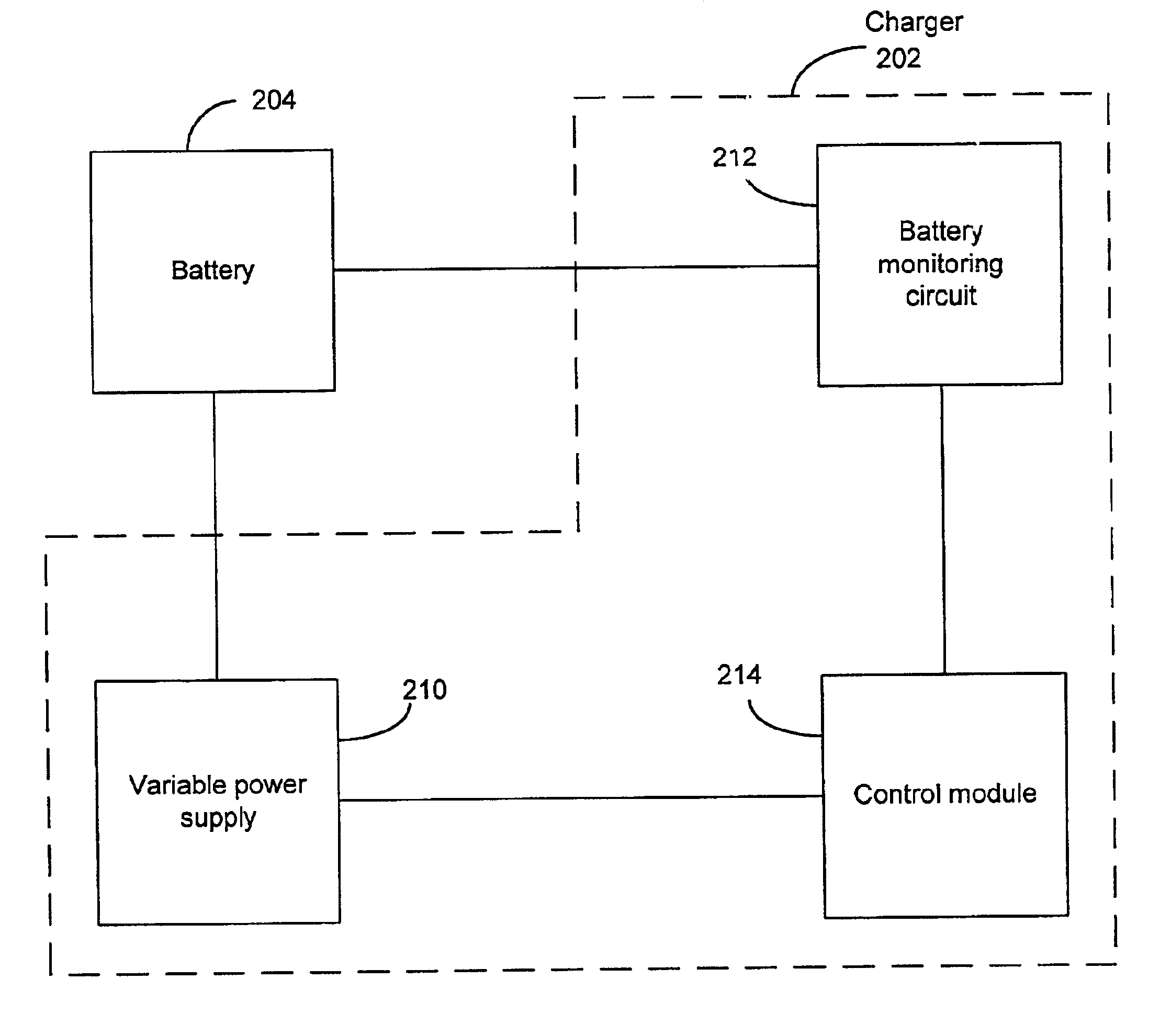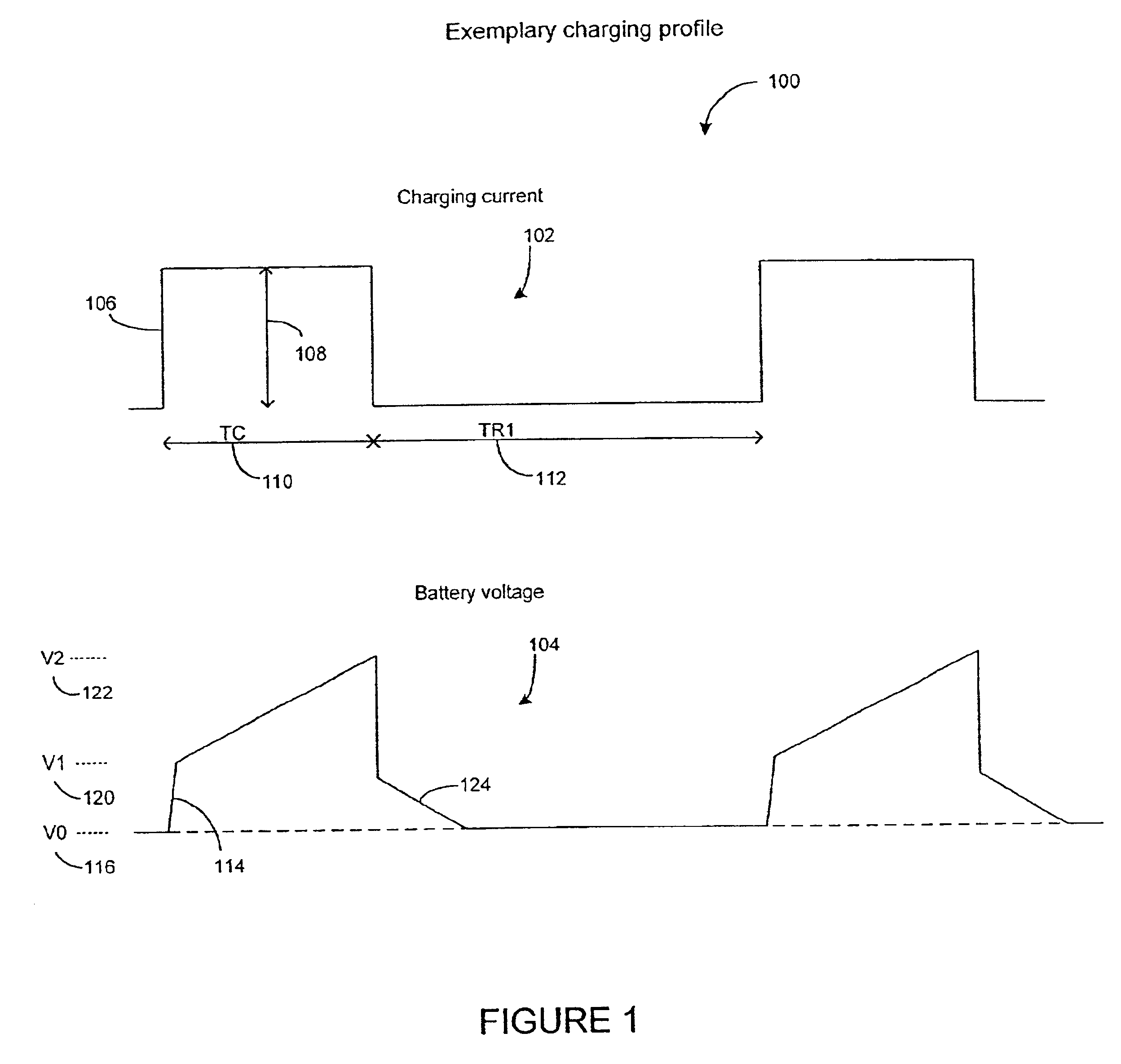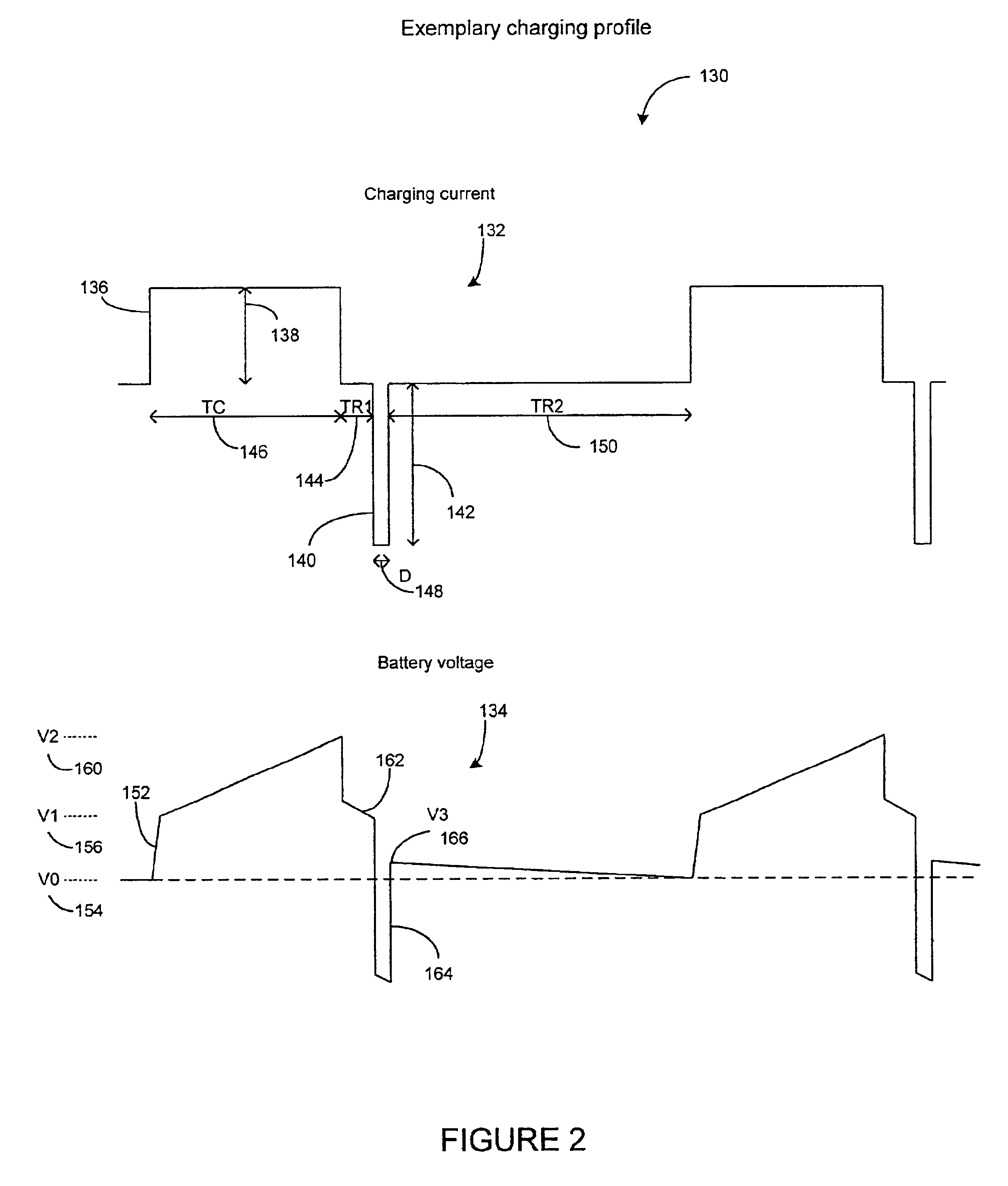Battery charging method
a battery and charging method technology, applied in the field of rechargeable batteries, can solve the problems of inability to modulate the current amplitude based on these two similar voltage situations, inability to achieve the effect of modulating the current amplitude, and inability to achieve the effect of reducing the discharging pulse amplitud
- Summary
- Abstract
- Description
- Claims
- Application Information
AI Technical Summary
Benefits of technology
Problems solved by technology
Method used
Image
Examples
Embodiment Construction
Reference will now be made to the drawings wherein like numerals refer to like parts throughout. The description of methods and their corresponding embodiments of the invention described herein is in context of charging an arbitrary rechargeable battery. In describing the inventive features of the charging process, exemplary values relating to battery parameters are disclosed in context of a standard 12 volt battery. It will be understood, however, that general inventive concepts disclosed herein are equally applicable to any number of rechargeable batteries used in any number of applications (e.g., cellular phone battery charging, standard-sized battery charging, etc.) without departing from the spirit of the invention.
The invention described herein relates to a battery charger that monitors one or more parameters of the battery, and based on the monitored parameters, regulates the charging and or discharging pulses. In particular, the monitored battery parameters include the termi...
PUM
 Login to View More
Login to View More Abstract
Description
Claims
Application Information
 Login to View More
Login to View More - R&D
- Intellectual Property
- Life Sciences
- Materials
- Tech Scout
- Unparalleled Data Quality
- Higher Quality Content
- 60% Fewer Hallucinations
Browse by: Latest US Patents, China's latest patents, Technical Efficacy Thesaurus, Application Domain, Technology Topic, Popular Technical Reports.
© 2025 PatSnap. All rights reserved.Legal|Privacy policy|Modern Slavery Act Transparency Statement|Sitemap|About US| Contact US: help@patsnap.com



